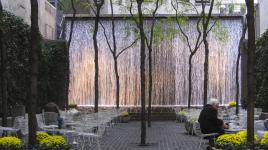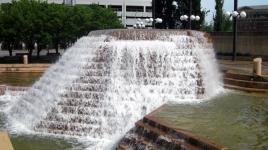Pioneer Information
Born on Long Island, New York, Zion attended Hamilton College and then Harvard before he was drafted into the Army during World War II. During the Battle of the Bulge he inadvertently opened fire upon a hedgerow; Zion said later his desire to become a landscape architect arose from a longing to restore the destroyed hedge.
After completing his tour of duty, Zion returned to Harvard, earning a B.A. in 1943, M.B.A. in 1946, and M.L.A. in 1951, and receiving the Charles Eliot Traveling Fellowship. While at Harvard, he was influenced by Lester Collins, Walter Gropius, Joseph Hudnut, and Norman Newton.
After traveling in Europe and North Africa, Zion joined I.M. Pei, Architect, in New York City before forming Zion and Breen Associates, Inc. in 1957. He was commissioned to create Paley Park in 1967, the first “vest-pocket” park in the city, which was so successful that mini-parks became a standard part of the City Plan. In 1973 the firm moved to Imlaystown, New Jersey, to be closer to Zion’s personal farm.
The firm completed work for the Museum of Modern Art, Princeton, and Yale. Notable projects include the Philip Morris Corporate Offices; Liberty State Park; Cincinnati Riverfront Park; and the IBM World Headquarters Atrium.
Zion served on New York City’s Arts Commission and was Vice President of the Architectural League of New York. In 1968 he published Trees for Architecture and Landscape and was named a Fellow of the American Society of Landscape Architects.














